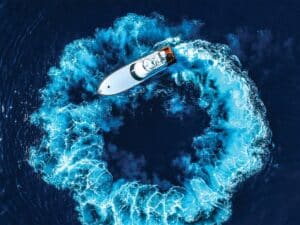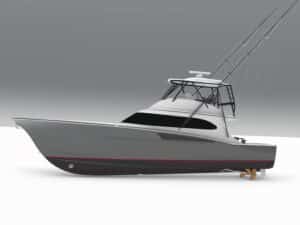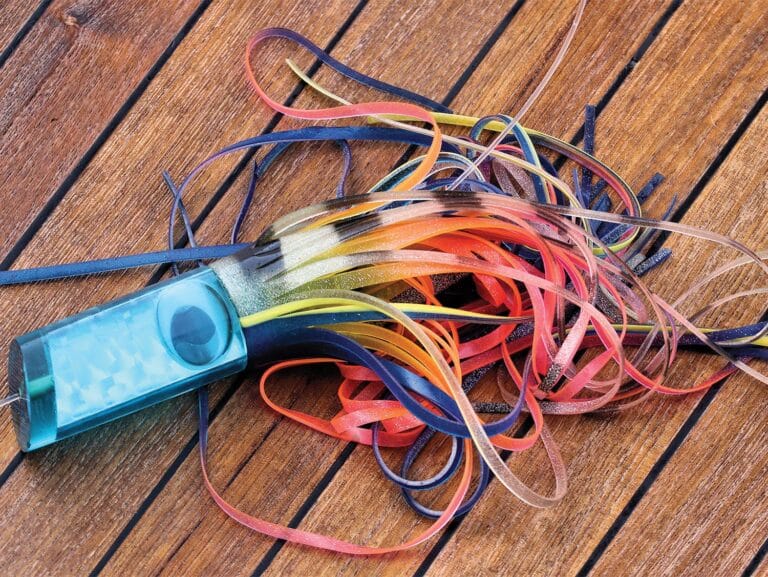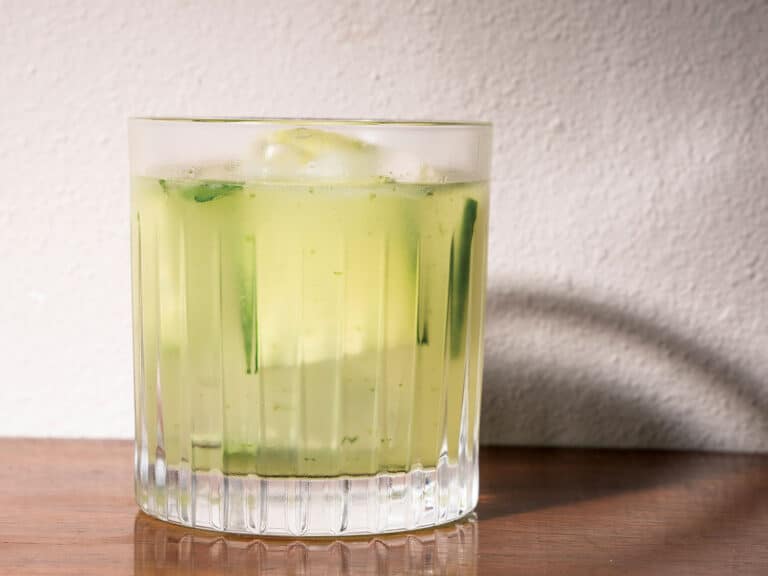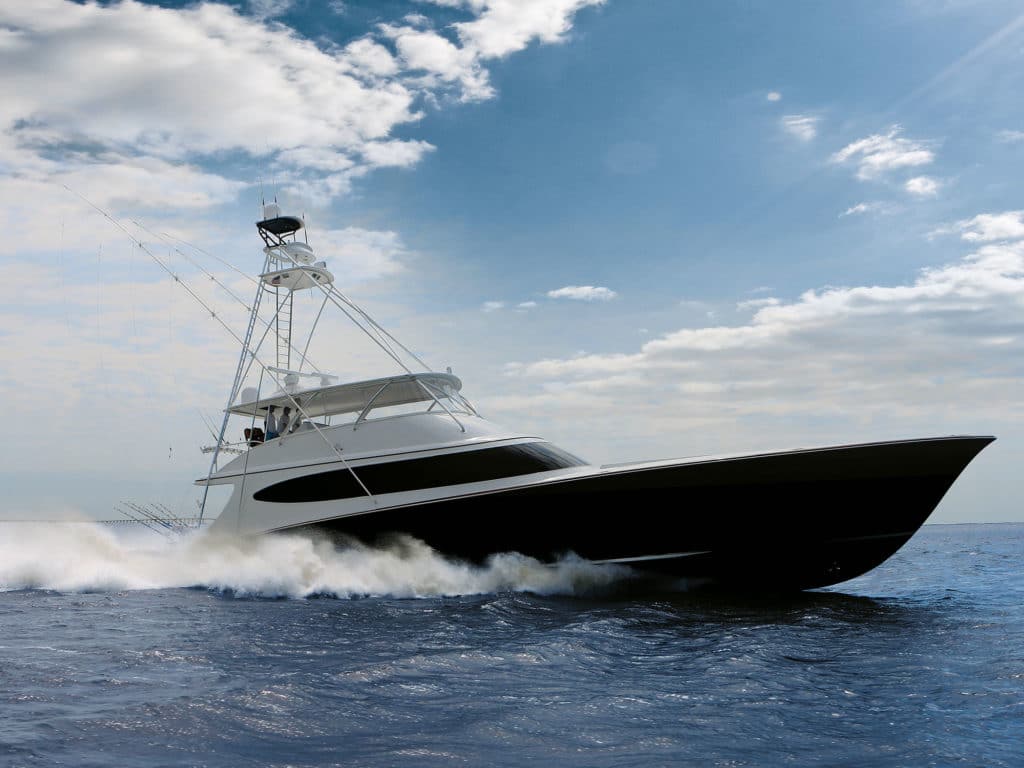
If you know anything about Bayliss, he is a stickler for performance, and soon enough, I found out just how well the boat stepped up and ran.
Engine and Pump Rooms
Access to the power plant and major systems of Singularis is attained from the cockpit by raising the center of the lower-mezzanine couch and heading down a short ladder to a watertight door. The sight tubes for the fuel tanks and storage for couch cushions are located there; the Seakeeper 35 is just aft. Through the door is a world of pristine white, chrome and polished stainless steel that includes the pair of massive MTU M94 diesels and two Northern Lights 38 kW generators with custom operation panels to quickly check oil and water levels.
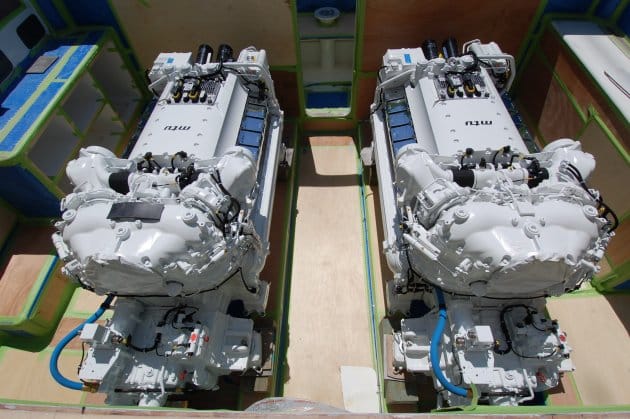
On the portside outboard of the engine is a bank of batteries and breaker panels. Bayliss prefers traditional breakers to digital control systems, especially on boats that will be out of the country with any regularity. The engine room is monitored by cameras tied into the helm electronics and A/V system on board. A pair of IceSea ice makers also reside beneath the cockpit aft of the engine room.
The pump room located forward includes two FCI watermakers that can produce a combined 3,600 gallons per day; the 16-zone Cruisair chiller system is also located there. Two sea chests feed the main engines and a pair of Scot pumps that supply the raw-water washdown and other systems. The retractable transducer for the Furuno 360-degree-scanning sonar is also housed here within its own sea chest. There is a compressor system that can refill up to eight scuba tanks simultaneously, a hanging closet for wetsuits and dive gear, and a system for blending Nitrox.
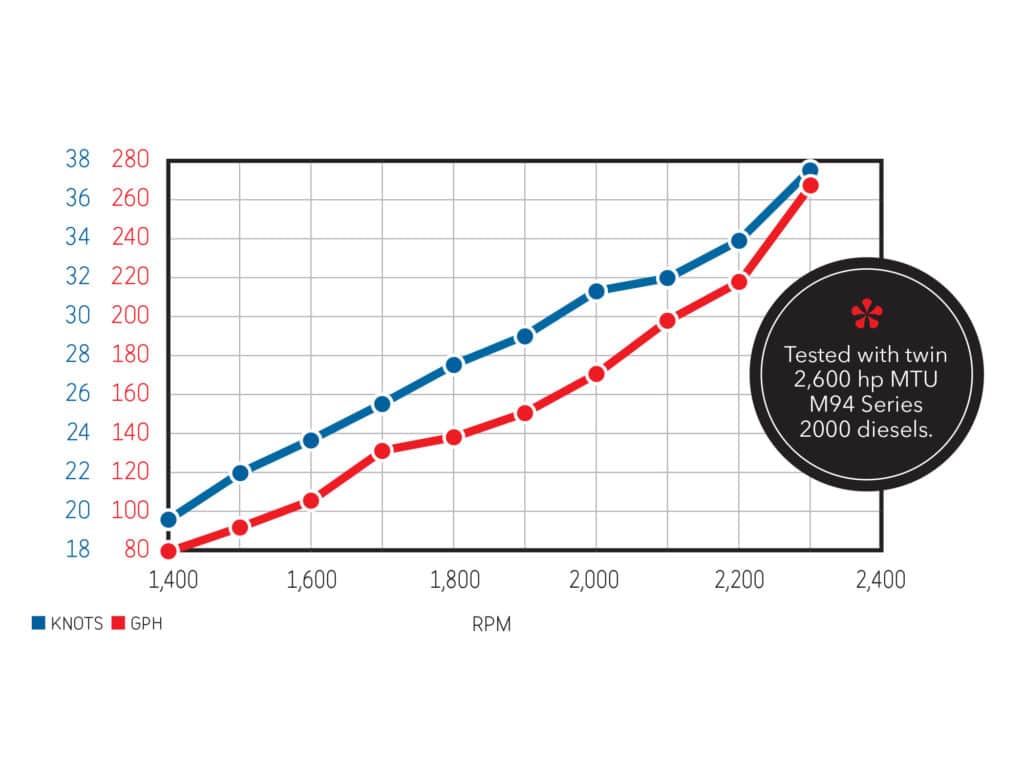
Performance
She might be big, but the Singularis can cook when you pour on the ponies. With an approaching tropical storm and Oregon Inlet its usual hinky self, it was decided to run her in the Sound, where there was a 1- to 3-foot short chop that was never felt. The boat has a smooth, solid feel at speed; between Bayliss and her captain, Jerry Lanzerotti, I got a good idea of what she can do. Flat-out, the boat hit 38 knots, which is fast for any yacht, but it’s almost ridiculously fast at 90 feet. At 30 knots, the sheer size of the boat masks the feeling of speed, but she can cruise all day at 75 percent load burning 160 gph. Drop it down to 25 knots and consumption dips to 126 gph; back off a little more to 22 knots and she sips 92 gph. So she can run with the fast crowd, but can a sport-fisher this big dance with billfish? She sure can, and Bayliss wouldn’t have it any other way. Her moves were surprisingly nimble as Lanzerotti had her backing down at 9 knots, making maneuvers to port and back to starboard as if in pursuit.
On the troll, the water behind the boat is almost undisturbed. “There is almost no white water, which means a better view of fish moving into the pattern,” Bayliss notes. It isn’t often that I get to experience a vessel the size and caliber of Singularis, and I was honored to have Bayliss with me the entire day we spent aboard. He is duly proud of all the work his team put into making it possible — and with good reason. She is a very special vessel.
Specs
- LOA: 90’1.5″
- Beam: 22’11”
- Draft: 5’10”
- Disp.: 180,000 lb.
- Fuel: 4,000 gal.
- Water: 500 gal.
- Power: Twin 2,600 hp MTU M94 Series 2000 diesels
For more coverage, read the Bayliss 90 Boat Review.
For more coverage of Bayliss Boatworks, visit our 90-foot Singularis, Bayliss 64-Foot Parranda and Bayliss 64-Foot Lor-a-Di boat build galleries.
